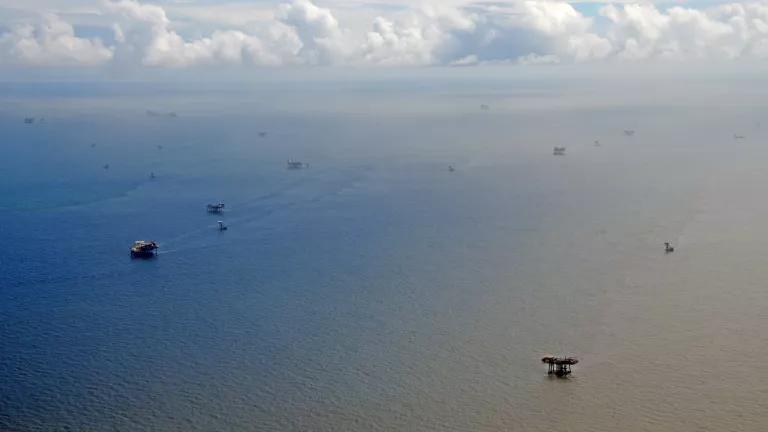Today is the inaugural celebration of an official World Oceans Day! It will be interesting to witness what traditions to celebrate World Oceans Day build up, and whether or not this will become the Earth Day of the year-2020 crowd. I would love to see this happen - after all, more than 70% of the earth's surface is ocean. It's about time these watery "giving trees" of the globe got some attention! For all they give us - food, recreation, jobs, every other breath of oxygen - our oceans deserve a holiday.
And they need a break. Our oceans are in a silent state of collapse caused by increased strain on fish stocks, pollution, and destruction of productive marine habitat.
We must act - quickly - to protect our oceans.
In the spirit of creating new traditions, and "think global, act local", I'd like to share my top regional and state asks to protect and restore my "home ocean" - the Atlantic. I'm not sure that there's a Santa of World Oceans Day, but this is what I'll be looking under waves for:
1. Save the our submarine canyons and seamounts
Last week I was able to witness the creation of an important new entity: the Governors Mid-Atlantic Council on Oceans. This new body will together tackle critical regional issues, such as developing properly sited offshore renewable energy, increasing protection of important offshore habitats, addressing climate change and sea level rise, and working to increase federal support for water quality infrastructure improvements.
I would like to see this entity provide permanent and meaningful protection for the mid-Atlantic's extraordinary submarine canyons and seamounts. Far offshore, under the waves, are seamounts and a series of ancient canyons that stretch from New York to Virginia. Our canyon structures provide complex habitat able to support a range of ocean life - from corals, sponges, and anemones (which need a hard surface to attach to) to wonderful crevices where tilefish - one of our "ocean engineers" - industriously build burrows that shelter lobsters, crabs, and eels in pueblo-like homes. Catsharks and other marine life dart around the seamounts which contain rare species, as well as provide essential habitat, prey, and spawning grounds for other animals like red crabs.
As bottom trawl gear rapidly evolves and oil and gas development is examined for the Atlantic, these special, sensitive areas grow more threatened to disturbance. Many of the coral species that inhabit these fantastic oases are very slow growing and do not recover easily; we need to keep these areas intact and respect the unique and critical roles they serve as part of the ocean ecosystem.
2. Speedy delivery of the $6 million recently allocated in New York's budget for ocean and Great Lakes projects
I would love to see the record $6 million allocated in this year's budget move out of the state's coffers and into the hands of the contractors working on important ocean and Great Lakes projects. New York has become an aggressive advocate on ocean issues through the visionary efforts of the New York Ocean and Great Lakes Ecosystem Conservation Council and with Governor David Paterson's leadership in establishing with the regional ocean council mentioned above. And this spring, the Governor and the New York State Legislature committed $6 million to ocean and Great Lakes priorities in this year's budget to help revive New York's ocean and Great Lakes. This is not only good environmental news; New York's ocean and Great Lakes are our economic engines and numerous studies have proven that the health of our marine and freshwater resources will determine the health and prosperity of our coastal communities.
But many of the ocean and Great Lakes programs are in dire financial straits and, without continued funding, contractors may be forced to end their projects or lay off staff. Multi-year projects are in particular crisis, as the initial financial investments will be wasted if projects stall. For example, funding directed to monitor the passage of whales through New York's waters has received national acclaim and proven that migrating humpbacks, fin and right whales traverse just a stone's throw from the Statue of Liberty. The scientists who review the whale recordings recently announced that the recorders picked up sounds from a blue whale - one of the ocean's kings - just 70 miles off Long Island. The data is exciting and will help advise the proper siting of marine industry, but is not scientifically conclusive until it is carried out for its final years. We need to fund the remaining research for this project and others, now.
In the coming months, NRDC will continue working to ensure that these actions are not simply dreams, but reality. (But if they arrive gift-wrapped for World Oceans Day, we'll be thrilled).




